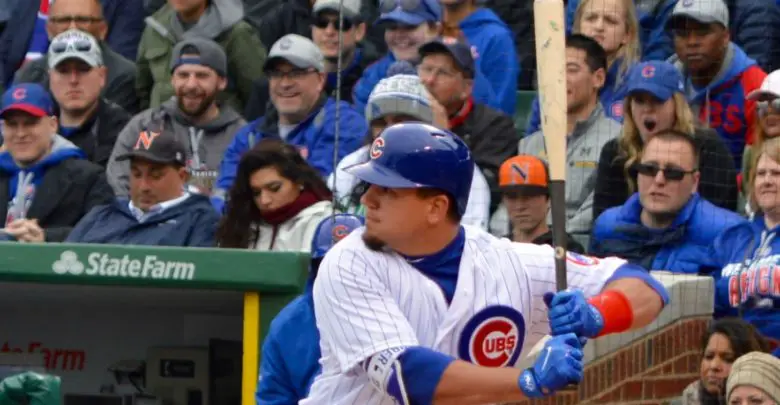
Examination of Unluckiest Cubs Hitters May Reveal Big Rebound for Schwarber
Statisticians have always tried to determine the extent to which a hitter’s talent level contributed to run production. Statcast now serves as a magnifying glass, allowing baseball data scientists to combine exit velocity, launch angle, batted ball location, and additional variables to truly zoom in on a hitter’s true talent.
For example, xStats uses Statcast data to create expected statistics, including expected wOBA (xOBA), Statcast FIP (scFIP), Batted Ball FIP (bbFIP), and dozens of other predictive numbers. Never before have we been able to so thoroughly neutralize the randomness of baseball, although the sport will always be kept alive by the arbitrary blood pumping through its haphazard heart.
We can use xStats to see which Cubs batters overperformed and underperformed in 2017 relative to what they should have done. Below is each batter’s wOBA vs. xOBA, with the biggest overperformers at the top and the players who underperformed the most at the bottom.
Despite Javier Baez’s league-average .326 wOBA, xStats suggests El Mago should’ve truly hit to a .296 wOBA. On the other hand, while Kyle Schwarber produced a slightly above-average .333 wOBA, the Statcast model believes Schwarber hit well enough to deserve a whopping .347 wOBA.
Kris Bryant and Ian Happ are the next hitters to overshoot their xOBA. Keep in mind, though, that both are fast baserunners who are capable of beating out grounders. What’s more, Bryant faces unorthodox defensive shifts consistently, which could skew these numbers.
Other mild underperformers include Ben Zobrist and Anthony Rizzo. Zobrist’s oddly unproductive year might not have been as bad as his .302 wOBA suggests. Consider that his .313 xOBA was higher than Baez, Addison Russell, or Jason Heyward.
Zobrist’s xOBA was close to Jon Jay’s .319, but Jay’s actual wOBA suggests he massively outperformed Zobrist. There were fans wondering why Maddon insisted on playing Zobrist and batting him leadoff over Jay at times; maybe this is one answer.
Of course, xStats isn’t immune to the natural limitations of baseball statistics. Just because xOBA implies what a hitter should theoretically produce doesn’t mean it’s an absolute marker of a hitter’s true talent. However, xOBA counterbalances some of baseball’s natural randomness by taking out the effect of defense shifts, defensive quality, ballpark, and weather.
I want close this post out with a thought about Schwarber’s future value. Several signs point towards the hulking slugger rebounding next season. Not only is his xOBA suggestive of better numbers, but War Bear’s post-demotion metrics, mechanical changes, and general attitude all insinuate a wOBA volcano that’s about to explode in 2018.


